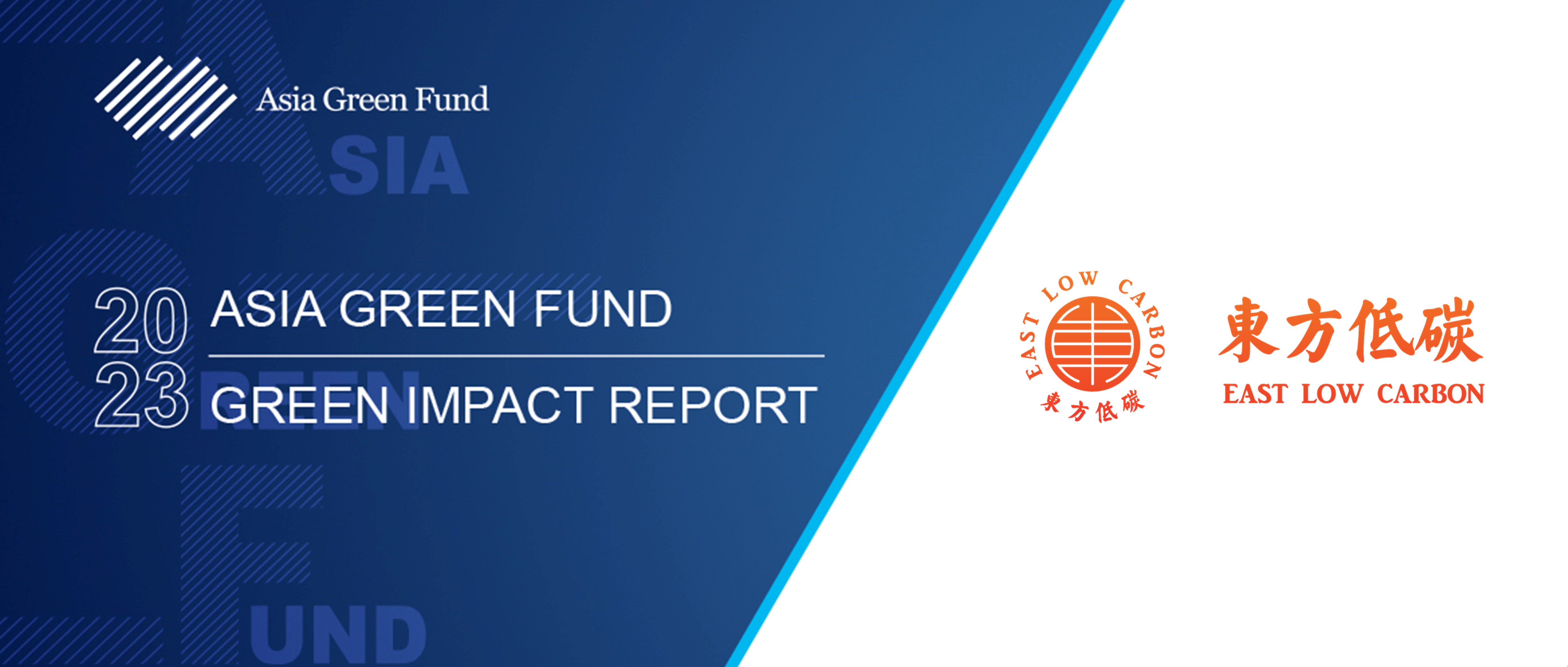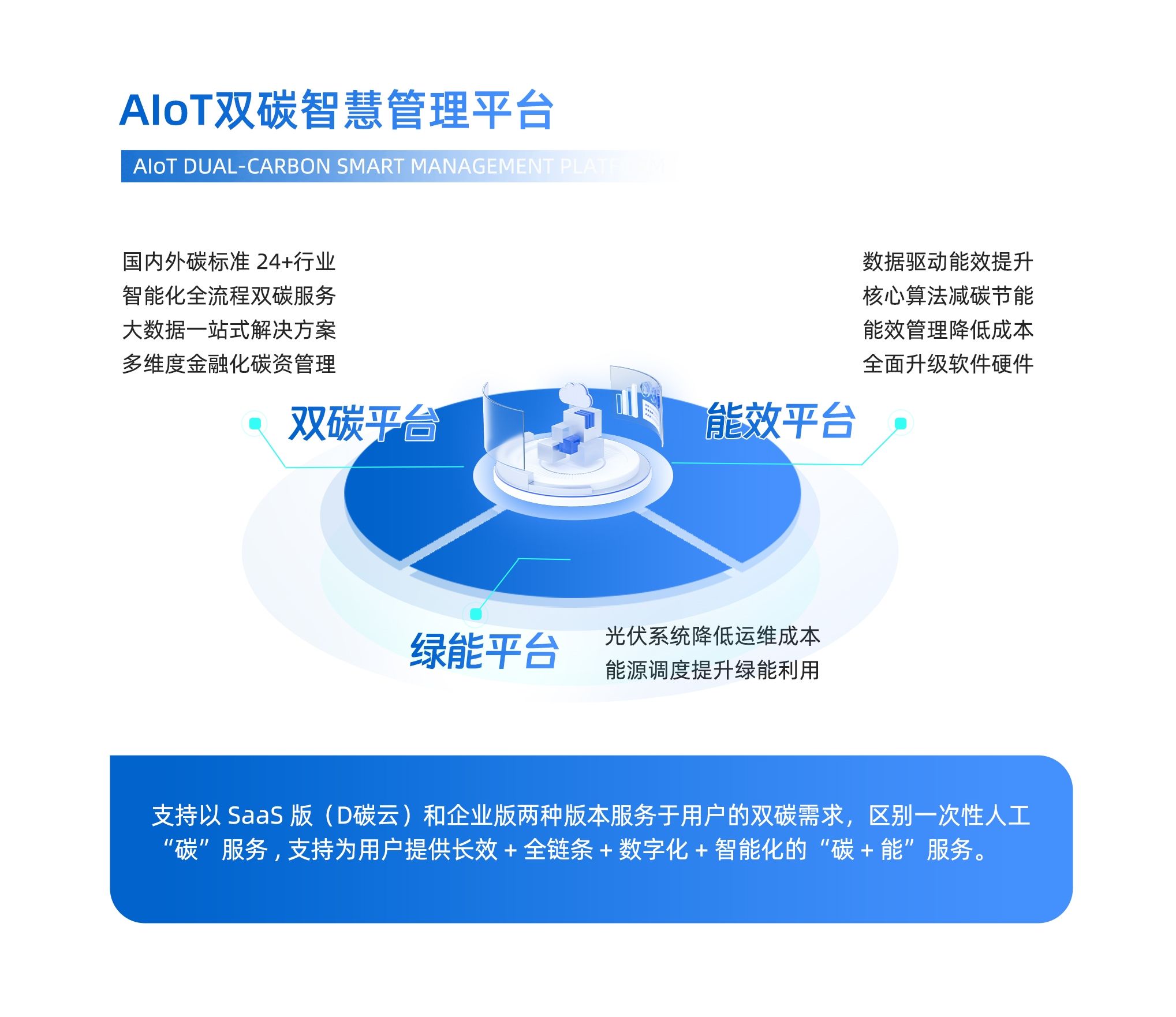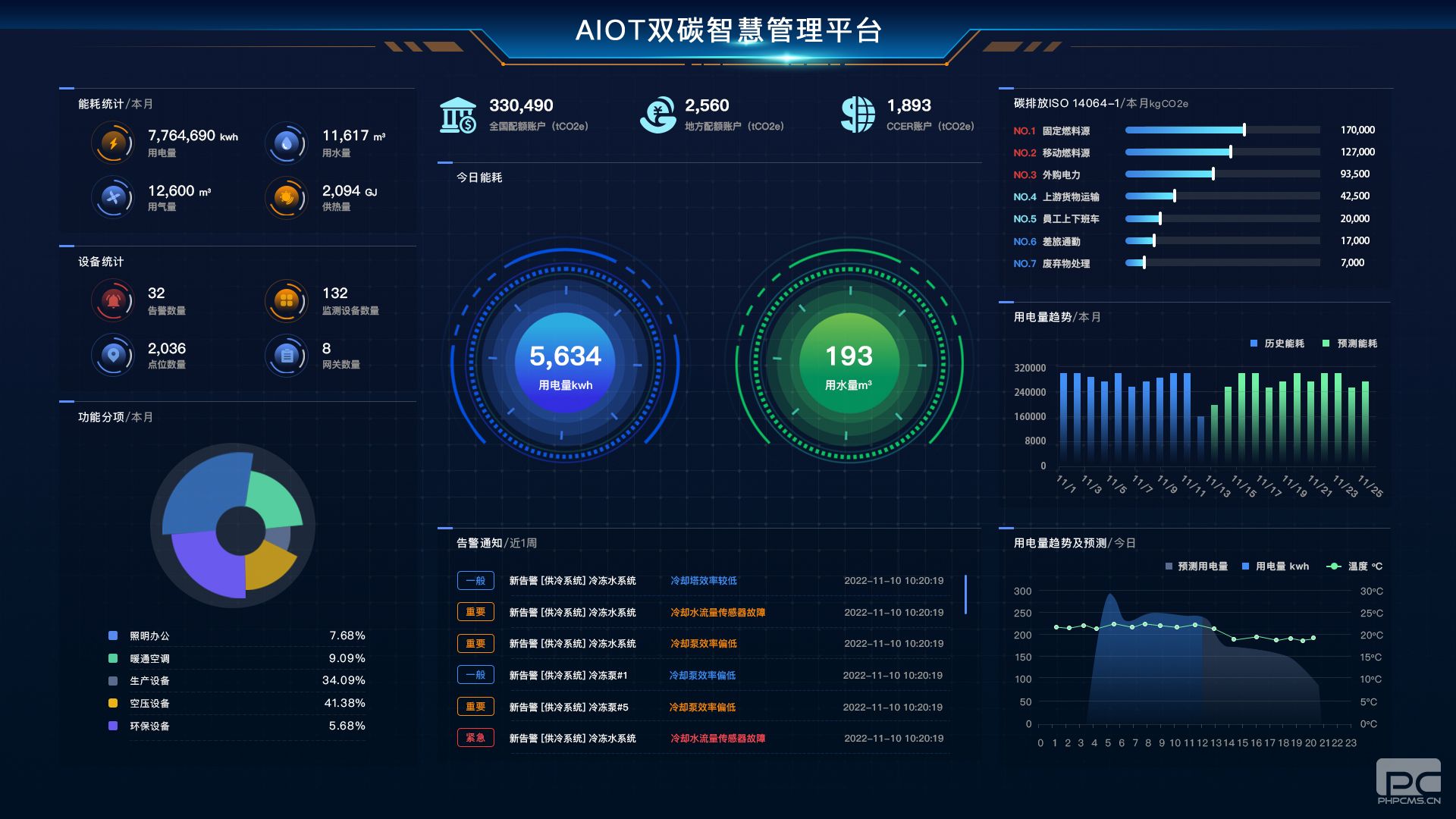06/12
2024
<2023 Green Impact Report> Excellent Enterprise——East Low Carbon
06/12

"In 2017, Asia Green Fund invested in East Low Carbon with the aim of driving the green transformation of buildings and infrastructures through investment. Asia Green Fund provides a wide range of support to East Low Carbon, including assisting in strategic transformation, from a traditional energy-saving technology provider to an AIoT-enabled comprehensive energy service platform; optimizing organizational structure by introducing key talent; connecting industrial resources to promote collaborative development among portfolio companies; and facilitating international certification, such as ISO14064 (organizational carbon emissions accounting) international certification. East Low Carbon is a leading domestic provider of intelligent energy efficiency management solutions, with a cumulative retrofit area of nearly 10 million square meters, reducing carbon dioxide emissions by 100,000 tons, optimizing enterprise comprehensive energy efficiency, reducing energy costs, and decreasing pollutant emissions."
According to statistics of <2022 China Building Energy Consumption and Carbon Emission Research Report>, in 2020, the total energy consumption in the entire process of building construction in China reached 22.7 billion tce (tons of standard coal equivalent), accounting for 45.5% of the total energy consumption in the country. With the continuous increase in the total number of buildings, improvement in living comfort, and accelerated urbanization, building energy consumption is expected to continue to rise. After China’s pledge of reaching Carbon Peaking by 2030 and Carbon Neutrality by 2060, green buildings and building energy efficiency have become an urgent priority in China.
For existing public buildings, in the limited space for energy conservation, it is necessary to explore new ways to achieve more and faster energy efficiency improvements and carbon emission reductions. Traditional methods of energy efficiency assessment on building designs are time-consuming and labor-intensive, and the designed energy consumption plan cannot be correlated with operational energy consumption, making it difficult to predict energy consumption and control the total amount.
The current artificial intelligence infrastructure (i.e., Internet of Things and big data) in the field of building energy efficiency in China is still relatively weak. There is a need to promote the deeper integration of new generation digital technologies into the field of construction, contributing value to the improvement of building energy efficiency in China. With the development of digital technology, digital technologies represented by AI are playing an increasingly important role in empowering energy conservation and efficiency improvement and promoting dual-carbon intelligent management.
Empowering with Data Intelligence: Leading Innovation in Energy Management Practices
Guided by the dual-carbon strategic goals, the digitization of energy management and the improvement of energy efficiency have become intrinsic driving requirements for corporate development and transformation. East Low Carbon has independently developed an AIoT-enabled dual-carbon smart management platform, transforming enterprise energy management practices. It has transformed traditional management methods, primarily experience-based, into ones primarily driven by intelligent data decision-making, thereby assisting enterprises to be well-positioned for carbon peak and carbon neutrality. East Low Carbon employs AI-driven energy efficiency improvements, combining hardware upgrades with software platforms. It has transitioned from a traditional energy-saving company to a comprehensive, digitalized carbon neutrality solution service provider, offering customers multidimensional, deep-level, one-stop, and comprehensive carbon neutrality solution services. This empowers enterprises in their digital and intelligent energy management transformation and drives the industry's sustainable development.
According to statistics of <2022 China Building Energy Consumption and Carbon Emission Research Report>, in 2020, the total energy consumption in the entire process of building construction in China reached 22.7 billion tce (tons of standard coal equivalent), accounting for 45.5% of the total energy consumption in the country. With the continuous increase in the total number of buildings, improvement in living comfort, and accelerated urbanization, building energy consumption is expected to continue to rise. After China’s pledge of reaching Carbon Peaking by 2030 and Carbon Neutrality by 2060, green buildings and building energy efficiency have become an urgent priority in China.
For existing public buildings, in the limited space for energy conservation, it is necessary to explore new ways to achieve more and faster energy efficiency improvements and carbon emission reductions. Traditional methods of energy efficiency assessment on building designs are time-consuming and labor-intensive, and the designed energy consumption plan cannot be correlated with operational energy consumption, making it difficult to predict energy consumption and control the total amount.
The current artificial intelligence infrastructure (i.e., Internet of Things and big data) in the field of building energy efficiency in China is still relatively weak. There is a need to promote the deeper integration of new generation digital technologies into the field of construction, contributing value to the improvement of building energy efficiency in China. With the development of digital technology, digital technologies represented by AI are playing an increasingly important role in empowering energy conservation and efficiency improvement and promoting dual-carbon intelligent management.
Empowering with Data Intelligence: Leading Innovation in Energy Management Practices
Guided by the dual-carbon strategic goals, the digitization of energy management and the improvement of energy efficiency have become intrinsic driving requirements for corporate development and transformation. East Low Carbon has independently developed an AIoT-enabled dual-carbon smart management platform, transforming enterprise energy management practices. It has transformed traditional management methods, primarily experience-based, into ones primarily driven by intelligent data decision-making, thereby assisting enterprises to be well-positioned for carbon peak and carbon neutrality. East Low Carbon employs AI-driven energy efficiency improvements, combining hardware upgrades with software platforms. It has transitioned from a traditional energy-saving company to a comprehensive, digitalized carbon neutrality solution service provider, offering customers multidimensional, deep-level, one-stop, and comprehensive carbon neutrality solution services. This empowers enterprises in their digital and intelligent energy management transformation and drives the industry's sustainable development.

The East Low Carbon AIoT Dual-Carbon Smart Management Platform consists of three major sub-platforms: "Dual-Carbon," "AIoT Energy Efficiency," and "Green Energy." It supports both SaaS and enterprise versions to serve users' dual-carbon needs, allowing for flexible combinations according to user requirements. It distinguishes itself from one-off manned "carbon" services by providing long-term, end-to-end, digitalized, and intelligent "carbon + energy" services. This platform assists users in establishing a comprehensive dual-carbon pathway, creating new incremental value.
The East Low Carbon AIoT Dual-Carbon Smart Management Platform breaks through traditional single-energy-saving product or equipment upgrade transformations by achieving multidimensional energy savings. Using independently developed AI algorithms, it optimizes the management of energy-consuming equipment, facilitating energy efficiency improvement and carbon emission reduction. This platform innovates in application scenarios, implementation processes, and technologies, achieving the "three more" effects: more efficient—AI helps engineering personnel improve efficiency by 40%; more energy-saving—AI energy-saving achieves 3% to 10%, combined with energy-saving transformations, energy savings can reach 20% to 40%; and more intelligent—comprehensive carbon emission management, AI-driven, achieving carbon emission optimization.
The East Low Carbon AIoT Dual-Carbon Smart Management Platform breaks through traditional single-energy-saving product or equipment upgrade transformations by achieving multidimensional energy savings. Using independently developed AI algorithms, it optimizes the management of energy-consuming equipment, facilitating energy efficiency improvement and carbon emission reduction. This platform innovates in application scenarios, implementation processes, and technologies, achieving the "three more" effects: more efficient—AI helps engineering personnel improve efficiency by 40%; more energy-saving—AI energy-saving achieves 3% to 10%, combined with energy-saving transformations, energy savings can reach 20% to 40%; and more intelligent—comprehensive carbon emission management, AI-driven, achieving carbon emission optimization.

Addressing Customer Pain Points
In March 2022, the Ministry of Housing and Urban-Rural Development issued "14th Five-Year Plan for Building Energy Conservation and Green Building Development," which clearly states that by 2025, newly built urban buildings must be green buildings. The energy utilization efficiency of buildings will steadily increase, the energy consumption structure of buildings will be gradually optimized, and the growth trend of building energy consumption and carbon emissions will be effectively controlled. This will essentially form a green, low-carbon, and circular development mode for construction, laying a solid foundation for carbon peak in the urban and rural construction sector by 2030.
After more than a decade of deep cultivation and practice in the field of green building energy conservation, East Low Carbon has accumulated rich experience in energy management in various sectors such as hotels, industrial enterprises, hospitals, commercial supermarkets, and data centers. Among these, hotels have attracted particular attention due to their high comprehensive functional requirements compared to other types of public buildings, resulting in significant energy consumption issues.
Taking a large hotel as an example, considering the existing building energy conservation and green building management needs, as well as the direction of digital transformation development in the city, East Low Carbon proposed the AIoT dual-carbon smart management platform to upgrade the hotel’s limited digitalization and intelligence capabilities in energy management. East Low Carbon implemented comprehensive energy-saving optimization measures, including efficient equipment energy saving, application technology energy saving, AIoT control and management energy saving, and continuous operation and debugging diagnosis of AIoT. This involved a combination of hardware transformation and software platform to comprehensively optimize and transform the electrical system, hot water system, HVAC system, water system, steam system, and control system of the hotel. By driving data-enabled energy efficiency optimization, this initiative aimed to reduce carbon emissions and promote the digital transformation of energy management.
The AIoT Intelligent Cloud Platform automatically collects energy consumption data, monitors the operating status of energy-consuming devices, and provides real-time monitoring of energy usage in hotel buildings. It offers flexible and diverse visualization, prediction, and analysis of energy consumption data. Additionally, it can complement AIoT algorithms to provide energy-saving renovation suggestions, enhance the effectiveness of energy-saving transformations, assist in energy management decision-making, and reduce and control current energy waste and consumption. This ultimately leads to an overall energy savings of 23% for the hotel, a reduction in annual carbon emissions by 5941 tons, and energy savings of 7 million RMB per year.
Strategic Deployment: Empowering Sustainable Urban Development
In its role as a comprehensive, data-driven carbon-neutral solution provider, East Low Carbon actively integrates into the national strategy for achieving carbon peak and carbon neutrality by 2060. Additionally, responding to the policy calls in Shanghai regarding the development of AI, digital transformation in manufacturing, green development, and low-carbon transition, East Low Carbon continuously refines and upgrades its AIoT platform products and services. Leveraging its extensive practical experience in the field of dual-carbon services, East Low Carbon contributes to the advancement and achievement of Shanghai's carbon peak and carbon neutrality goals. Several service projects and application scenarios have gained recognition and approval from government departments.
Furthermore, leveraging its years of service accumulation in energy conservation and low-carbon initiatives, as well as its development advantages in energy and carbon IT, East Low Carbon strengthens cooperation and fosters collaborative innovation with various stakeholders. It continuously explores the path of sustainable development, aiding in the realization of zero-carbon transformation and green development under the vision of carbon neutrality. In 2023, East Low Carbon forged strategic partnerships in ESG (Environmental, Social, and Governance) business with Deheng HanTong Law Firm, and signed a strategic cooperation agreement with the Shanghai Industrial Cooperation Promotion Center and DEKRA, aiming to promote ESG sustainable development in net-zero hotels, buildings, and industrial parks. East Low Carbon is committed to further cultivating the path of green and low-carbon development in the future.